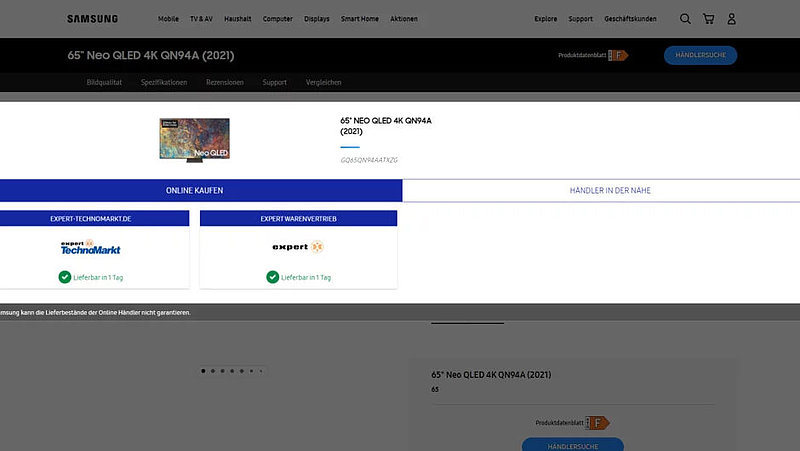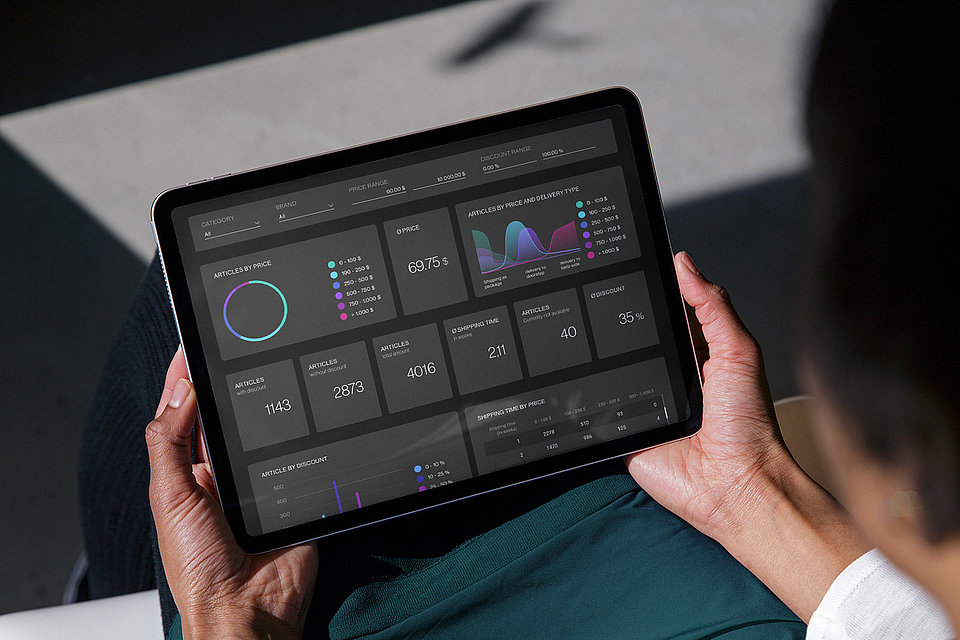Direct-to-consumer, D2C or DTC for short, has become one of the big trends in retail over the last few years. In D2C sales, brands and manufacturers sell their products directly to the end consumer without intermediaries.
This development has been made possible not least by the internet, where the barriers to market entry are lower than ever before. Online, a shop can be set up quickly, either classically on one’s own website, mobile as an app or even via Messenger, like the shop of the luxury fashion brand Threads. Distribution via online marketplaces such as Amazon, Otto or Zalando is even easier than in your own shop. Here, the infrastructure is provided by the sales platform. In return, the provider earns money from the sales through fees and commissions.
D2C: New distribution channels for small and large companies
Innovative young start-ups were the first to discover that direct online sales are more profitable than involving classic intermediaries. As a result, a number of new sales models have emerged online, some of which are very different from those of traditional retail. The company Harry’s, for example, offers razor blades on a subscription basis, since the demand for razor blades is usually continuous among customers.
But it is by no means only small start-ups that have discovered direct selling for themselves. Big corporations like Adidas or Lego are also increasingly relying on their own (online) shops. There, they attract buyers with individualisation options or even with exclusive products that cannot be found in retail stores.

The topic of direct-to-consumer is on everyone’s lips. You are probably also asking yourself: is direct sales suitable for my company?
Opportunities in D2C distribution: More than a larger profit margin
In their own online shop, brands have full control over how they present and market their products. On online marketplaces, the overall control over the presentation is smaller, but even there, sellers have certain freedoms. In both cases, this control starts with the price. It makes sense, because the elimination of middlemen also eliminates their profit margin. The manufacturing company can therefore decide whether it wants to make more profit with its products or whether it wants to offer its products at a lower price and thus cut out the competition.
The brand has control over its prices, which in turn prevents it from undesirably low prices. As retailers increasingly use online marketplaces to sell their goods, brands have to struggle with a image loss due to a permanent sale. In its own web shop, the brand can decide for itself when to sell the goods at the RRP and when a sale with discount prices is appropriate.
Getting closer to the customer through D2C distribution
In D2C sales, the responsibility for marketing and customer service rests with the brand itself. At first, this makes you think of additional effort, but it also brings many opportunities. Brands gain full control over their identity and branding, and ultimately their image. Through direct sales, the contact between brand and customer becomes much closer. For example, customers’ loyalty to the company and their identification with the brand can be strengthened through personalised interactions.
In customer support, brands also learn how satisfied customers are with their products, what problems occur and thus receive valuable input on how they can optimise their products in the future. Analyses of the return rate can also be used to derive optimisation potential – for product presentation as well as for product development.

Customer data: A valuable asset
Direct sales and customer support bring another advantage: customer data is now in the hands of the brand. This data is very valuable and reveals a lot about the customers: In addition to demographic data such as age structure, places of residence and gender, it also reveals information about the customers’ buying behaviour. What is the average shopping cart value? How soon after the first purchase do customers return for a second purchase? Do customers proceed to buy products that extend their original purchase?
Furthermore, cookie tracking can be used to target users who have already visited the online shop but did not make a purchase. So-called remarketing can be very effective.Last but not least, marketing departments can also use the email addresses of existing customers to further address them in order to influence consumer behaviour and stimulate additional purchases.
Digital transformation in retail leads the way
Ultimately, the shift to direct sales is not only driven by companies, but also by customers. Online shopping has become a new normal and consumers now expect to be able to order their desired products to their homes with just a few clicks – and not just since the retail sector was massively shaken by the Corona crisis.
Retail is in a deep crisis. Brands should therefore look for other ways to get their goods to the customer and thus achieve security for their sales turnover. In contrast to sales via online retailers and marketplaces, an owned online shop has a clear advantage: There, manufacturers can ensure that customers are not distracted from buying their products by competing products or cheap no-name goods. In return, customers can be sure that they will not be fooled by fake products and will only receive genuine branded goods. Exclusive products and additional services can also convince fans of a brand to order directly from the company’s shop instead of from large online retailers.
Challenges in D2C distribution: Long-term change management
Of course, direct-to-consumer distribution initially brings challenges. For companies that have relied exclusively on dealer distribution for years or decades, entering direct-to-consumer distribution, even if it happens gradually, means restructuring many areas of the company: E-commerce experts have to be hired, investments in marketing and customer support are necessary, logistics have to be adapted. Other departments, on the other hand, tend to be reduced in terms of personnel and finances. Even if a brand can collect the profits in D2C sales itself, it will initially face additional expenses.
Together, not against each other
Large, traditional brands have often built up long-standing business relationships with various retailers and are therefore limited in their courses of action. Generally, the termination of all business relationships is not the primary goal when a brand enters direct sales. The motto must be: Act with retail, not against it.
Brands should ask themselves how they can coexist with traditional retail and where they can even complement each other in a meaningful way. One possibility is, for example, to link from the online shop to other sellers or retailers if a certain article cannot be offered by the brand itself.

Direct selling comes with a great responsibility
In direct selling, a brand must itself take responsibility for customer satisfaction and brand image. However, this opportunity becomes a challenge if the brand is not aware of the importance of high-quality customer support. After all, only satisfied customers come back and returning, loyal customers are essential for success in direct selling.
For consumers, D2C sales also comes with certain disadvantages. From the customer’s point of view, for example, it is impractical not to be able to purchase all desired products in the same online shop. Therefore, it is all the more important that the positive aspects of the purchase outweigh the disadvantages for customers and that they keep the overall buying experience in positive memory.
Conclusion
Small and large brands alike have now realised that the direct selling of their own products has many advantages. The authority over the price and presentation of products as well as customer satisfaction are in their own hands.
In addition, generated customer data is a valuable asset that brands can access in D2C distribution. If a company knows how to use this data properly, it can gain a great competitive advantage from this information. Customers themselves also benefit from the option to easily purchase products directly from their favourite brands.
For larger brands in particular, the entry into direct sales naturally also involves a certain challenge, in which established business processes have to be questioned and departments restructured. On the whole, however, the barriers to entry into the D2C business today are low compared to the potential gains, not only monetary, that await companies that do not shy away from this challenge.


